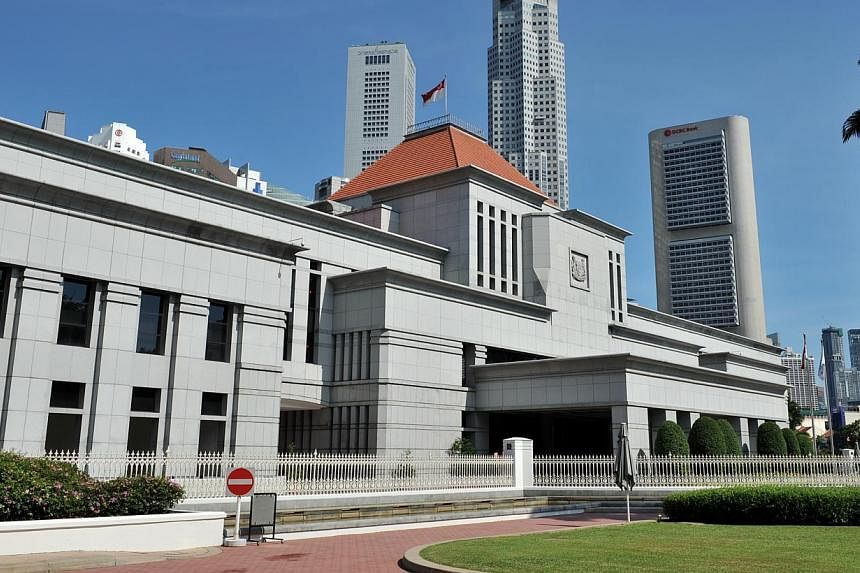One of the more interesting legal developments to look forward to this year is a review of the bail framework. This was announced recently by Law Minister K. Shanmugam in the wake of the Sydney hostage-taking on Dec 15 last year.
Far from being a knee-jerk reaction to a one-off event, the review should be seen in the light of an earlier statement by Second Minister for Home Affairs S. Iswaran in July 2012 that the bail framework is reviewed regularly and is an ongoing process.
The last time the bail framework was tweaked was in January 2012, when Parliament passed the Statutes (Miscellaneous Amendments) Bill prescribing that no bail would be granted when a person is charged with an offence punishable with death or imprisonment for life.
The recent announcement of a review by the Ministry of Law provides a ripe opportunity for a more comprehensive re-look at the entire system of bail.
In the media and academic writings, less ink has been spilled on the question of bail, compared with issues such as sentencing and the trial process.
The paucity of literature is a pity, because every person who is being investigated and/or charged with a criminal offence will invariably have to grapple with the issue of whether or not bail is offered and, if so, in what amount.
At the heart of any comprehensive review must be an attempt to strike the best balance between the rights of an accused, who is innocent until proven guilty, and the state's interest in securing the accused person's attendance in court.
Additionally, there is a public interest in ensuring that any potential injury to the public, from the possibility that potentially dangerous individuals are set loose upon the public, is minimised.
Understandably, to the extent that bail is discussed in public discourse, it is the latter half of this equation that is more often in the spotlight. Media reports often focus on cases in which accused persons abscond while on bail.
For instance, in the last six months alone, there were four news items on accused persons who had absconded while on bail. High-profile cases involving the issue of abscondment (actual or potential) include that of Singaporean football match-fixer Wilson Raj Perumal, who jumped bail in 2010 over an assault charge, and more recently issues of adequacy of bail relating to Chinese national Yang Yin. In 2013, 122 persons absconded while on bail and, in 2012, the figure was 99.
However, it is equally important that the upcoming bail review give some serious consideration to the question of the right of accused persons to be released on bail pending trial.
Article 9 of the Constitution guarantees the right of liberty of the person, and the presumption of innocence is accepted without question in our criminal cases as the "golden thread" that binds this corpus of law.
The practical impact of the availability of bail to accused persons is significant.
The last publicly available statistics on this were cited in a 2005 article by then Assistant Registrar of the Supreme Court Low Siew Ling, which showed that of 13,436 cases in which bail was granted in 2004, only 5,734 persons availed themselves of bail. The remaining 7,702 persons (57.3 per cent) were presumably unable to raise the bail amounts. Unless the statistics have been reduced dramatically in the intervening decade, such numbers are a cause for concern.
Persons who are remanded pending trial because of their inability to provide bail are at a disadvantage: They are less able to prepare for trial, and may also feel additional pressure to plead guilty, particularly where the period they may spend in remand prior to trial is potentially longer than a possible sentence. I have personally taken on such cases involving foreign workers, who do not have bailors and who elect to plead guilty out of convenience.
In some cases, individuals who are not on bail may be deprived of their liberty for longer periods than they are eventually sentenced to by the courts.
This danger was highlighted in the 2005 case of Yeo Eng Siang v Public Prosecutor, in which former chief justice Yong Pung How heard a case where the accused person was acquitted despite having been imprisoned for several months before his appeal was heard.
Having large numbers of persons in pre-trial remand also strains the resources of the state unnecessarily.
To reduce the numbers of persons in pre-trial remand because of an inability to post bail, one area of possible reform could be to consider providing the courts with broader powers to order non-monetary conditional releases in lieu of bail. This is known in some jurisdictions such as Scotland, Hong Kong, Canada and the United States as "release on one's own recognisance".
Conditions of such release can be flexible but as effective as monetary bail, as it allows courts to granularly assess and take into account the individual circumstances of accused persons. For instance, the Pennsylvania Rules of Criminal Procedure Code allows a bail authority to order curfews and reporting requirements in the case of young accused persons with poor family supervision, or to order regular drug testing for accused persons on drug charges.
While it might be overly ambitious to expect the 2015 bail review to provide the final word on a more flexible and effective system of bail, it might not be too controversial to extend a broader scheme of non-monetary conditional releases to a limited class of non-violent offenders who are assessed to be of low flight risk.
This would be of particular comfort to individuals who come from lower socio-economic backgrounds and are unable to find persons of sufficient means to post bail for them.
Hopefully, such a scheme could demonstrate that in the pursuit of justice, the balance between effectiveness and principle does not need to be a zero-sum game.
The writer is a director in the law firm Peter Low LLC.

